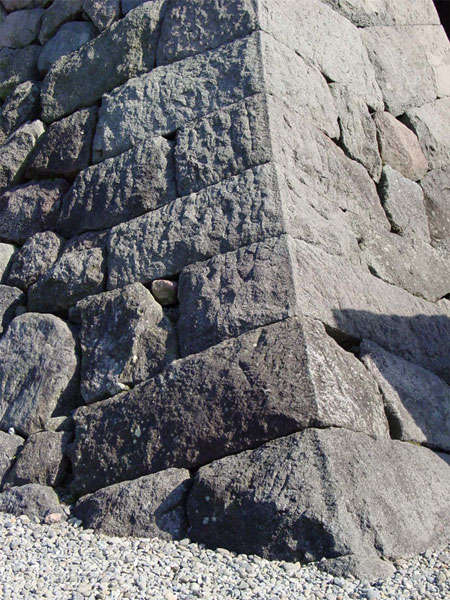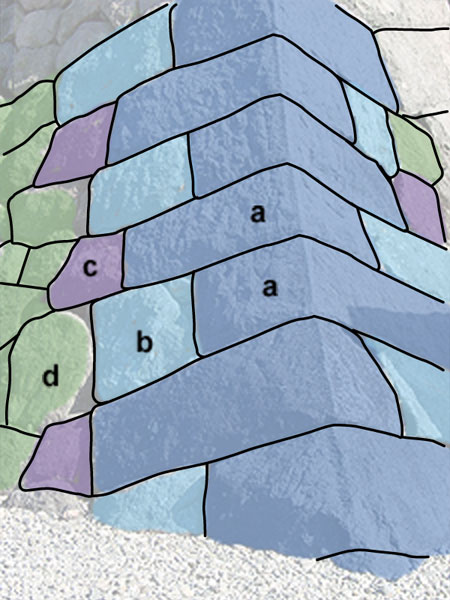|
||
 |
||


(C)2001 Japanese Architecture and Art Net Users System. No reproduction or republication without written permission.
掲載のテキスト・写真・イラストなど、全てのコンテンツの無断複製・転載を禁じます。
|
||||||
| sumi-ishi 隅石 | ||||||
| KEY WORD : architecture / castles | ||||||
| Also read kado-ishi 角石. Lit. corner stone. Long rectangularly hewn stones laid horizontally at the corners of a stone wall *ishigaki 石垣. For high stone walls hard stone is used and joined in a zipper pattern along the ridge at the corner of the wall. The size and number of the corner stones is determined by the overall height of the stone wall. The corner base stone is called sumikadobu ne-ishi 隅角部根石; the first corner stone above that is called ichiban sumi-ishi 一番隅石, the next stone is niban sumi-ishi 二番隅石 and the next is sanban sumi-ishi 三番隅石. The sumi-ishi is the main component of a corner stone grouping, along with *sumijiri-ishi 隅尻石 (corner tail stones), and sumiwaki-ishi 隅脇石 (corner side stones). Such corner stone groupings are termed sangizumi 算木積, seirouzumi 井楼積 or iketazumi 井桁積. The way the stones are laid fuseyou 伏せ様 in these corner groupings is categorized as formal shin 真, less formal gyou 行, and informal sou 草. For example, a formal sumi-ishi grouping is comprised of one corner stone joined with two or three corner side stones, carefully hewn and fitted in a row. The corner stone grouping supports the stone wall, so the size, number and placement of the sumi-ishi and other stones is carefully calculated, a process called ishigumi ishibakari 石組石図り. See the drawing for the names of the various components of the corner of a stone wall. Contrast sumi-ishi with flat stones *hira-ishi 平石, the other main type of stone used for stone facing. | ||||||

 |
||||||
| REFERENCES: | ||||||
| EXTERNAL LINKS: | ||||||
| NOTES: | ||||||
(C)2001 Japanese Architecture and Art Net Users System. No reproduction or republication without written permission. 掲載のテキスト・写真・イラストなど、全てのコンテンツの無断複製・転載を禁じます。 |
||||||